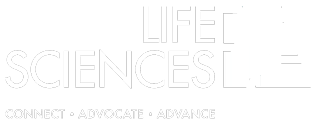 Quantitative research guides health care decision makers with statistics–numerical data collected from measurements or observation that describe the characteristics of specific population samples. Descriptive statistics summarize the utility, efficacy and costs of medical goods and services. Increasingly, health care organizations employ statistical analysis to measure their performance outcomes. Hospitals and other large provider service organizations implement data-driven, continuous quality improvement programs to maximize efficiency. Government health and human service agencies gauge the overall health and well-being of populations with statistical information.
Quantitative research guides health care decision makers with statistics–numerical data collected from measurements or observation that describe the characteristics of specific population samples. Descriptive statistics summarize the utility, efficacy and costs of medical goods and services. Increasingly, health care organizations employ statistical analysis to measure their performance outcomes. Hospitals and other large provider service organizations implement data-driven, continuous quality improvement programs to maximize efficiency. Government health and human service agencies gauge the overall health and well-being of populations with statistical information.
Health Care Uitilization
Researchers employ scientific methods to gather data on human population samples. The health care industry benefits from knowing consumer market characteristics such as age, sex, race, income and disabilities. These “demographic” statistics can predict the types of services that people are using and the level of care that is affordable to them. Health administrators reference statistics on service utilization to apply for grant funding and to justify budget expenditures to their governing boards.
Resource Allocation
Heath care economists Rexford Santerre and Stephen Neun emphasize the importance of statistics in the allocation of scarce medical resources. Statistical information is invaluable in determining what combination of goods and services to produce, which resources to allocate in producing them and to which populations to offer them. Health care statistics are critical to allocative and production efficiency. Inevitably, allocation decisions involve trade-offs–the costs of lost or missed opportunities in choosing one economic decision over another. Reliable statistical information minimizes the risks of health care trade-offs.
Needs Assessment
According to Frederick J. Gravetter and Larry B. Wallnau, statistics “create order out of chaos” by summarizing and simplifying complex human populations. Public and private health care administrators, charged with providing continuums of care to diverse populations, compare existing services to community needs. Statistical analysis is a critical component in a needs assessment. Statistics are equally important to pharmaceutical and technology companies in developing product lines that meet the needs of the populations they serve.
Quality Improvement
Health care providers strive to produce effective goods and services efficiently. Statistics are important to health care companies in measuring performance success or failure. By establishing benchmarks, or standards of service excellence, quality improvement managers can measure future outcomes. Analysts map the overall growth and viability of a health care company using statistical data gathered over time.
Product Development
Innovative medicine begins and, sometimes, ends with statistical analysis. Data are collected and carefully reported in clinical trials of new technologies and treatments to weigh products’ benefits against their risks. Market research studies steer developers toward highly competitive product lines. Statistics indirectly influence product pricing by describing consumer demand in measurable units.




